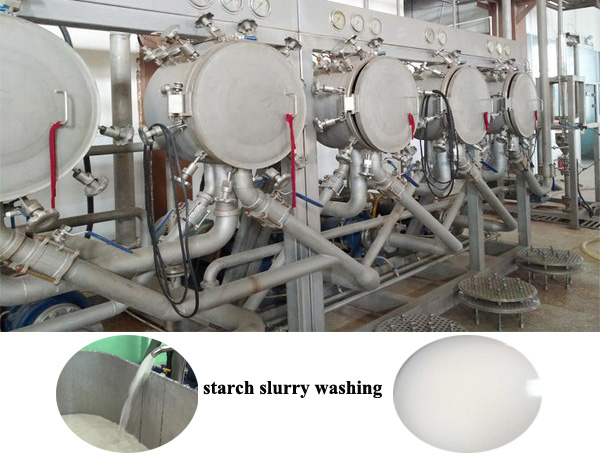industrial starch production from potato pdf
Release Time:2019-05-23 16:38Author:sd888Source:https://www.cndamachines.com/
Any questions about the product can be communicated with us at any time!
industrial starch production from potato pdf-journals on procedure of flour processing machine from potato-potatoes powder making plant equipment
Fresh tubers are processed during season and dry chips during the off-season in some countries. Extraction of starch from fresh potato roots (Fig. 1) can be divided into five main stages: preparation (peeling and washing), rasping/pulping/grating, purification (starch washing), dewatering and drying, and finishing (milling and packaging).
For potato, the process of starch extraction is relatively simple as there are only small amounts of secondary substances, such as protein, in the roots. When potato roots are harvested or selected for starch extraction, age and root quality are critical factors. potato roots need to be processed almost immediately after harvest, as the roots are highly perishable and enzymatic processes accelerate deterioration within 1-2 days. A first-rate quality starch can be obtained from potato using only water, and this makes the processing of potato starch and flour particularly suitable for developing countries and rural industries.
Advantages of potato starch
potato has many advantages for starch production.
High level of purity.
Excellent thickening characteristics.
A neutral (bland) taste.
Desirable textural characteristics.
A relatively cheap source of raw material containing a high concentration of starch (dry-matter basis) that can equal or surpass the properties offered by other starches (maize, wheat, sweetpotato, and rice).
potato starch:
is easy to extract using a simple process (when compared to other starches) that can be carried out on a small-scale with limited capital.
is often preferred in adhesive production as the adhesives are more viscous, work more smoothly, and provide stable glues of neutral pH
has clear paste.
The development of both the food and non food uses of potato starch has made much progress and continues to have a bright future. Both old and important new products, such as modified starches, starch sugars, starch-based plastics and fuel alcohol, are reviewed briefly.
Native starches
Starch can be classified into two types: native and modified. Native starches are produced through the separation of naturally occurring starch from either grain or root crops, such as potato, maize, and sweetpotato, and can be used directly in producing certain foods, such as noodles. The raw starches produced still retain the original structure and characteristics and are called “native starches”. Native starch is the basic starch product that is marketed in the dry powder form under different grades for food, and as pharmaceutical, human, and industrial raw material. Native starch has different functional properties depending on the crop source, and specific types of starch are preferred for certain applications. Native starch can be considered a primary resource that can be processed into a range of starch products.
Native starches have limited usage, mainly in the food industry, because they lack certain desired functional properties. The native starch granules hydrate easily when heated in water, they swell and gelatinize; the viscosity increases to a peak value, followed by a rapid decrease, yielding weak-boiled, stringy, and cohesive pastes of poor stability and poor tolerance to acidity, with low resistance to shear pressure, as commonly employed in modern food processing.
However, food, metallurgic, mining, fermentation, construction, cosmetics, pharmaceutical, paper and cardboard, and textiles industries among others use native starch in its traditional form.
Adaptability of the Technology
Thailand imports wheat flour for baked goods and other food products to a value of about US$120 million each year. The use of a locally produced potato flour to replace wheat flour as a source of carbohydrate would reduce the cost of production and save on foreign exchange ( Fig. 4(954)). The production of potato flour is a simple technology that farmers can do for themselves. In this way, farmers can increase their incomes.
How to Make the Flour
To produce potato flour, first wash the fresh roots then peel them. Wash the peeled roots. The roots are then chopped into small pieces about 5 x 0.5 x 0.2 cm, and sun-dried for two or three days (or dried in a hot air oven at 55oC). After drying, the moisture content of the potato chips should be less than 8%.
The chips are then milled, and the flour sieved through an 80 mesh sieve. Finally, the flour is packaged in plastic bags. Packaged in this way, the flour can be stored for at least eight months. The yield recovery of flour is about 20 - 40%, depending on the cultivar, the time of harvest and the equipment used.


